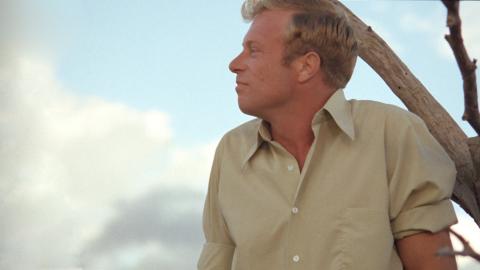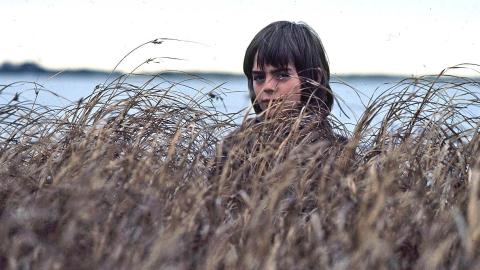
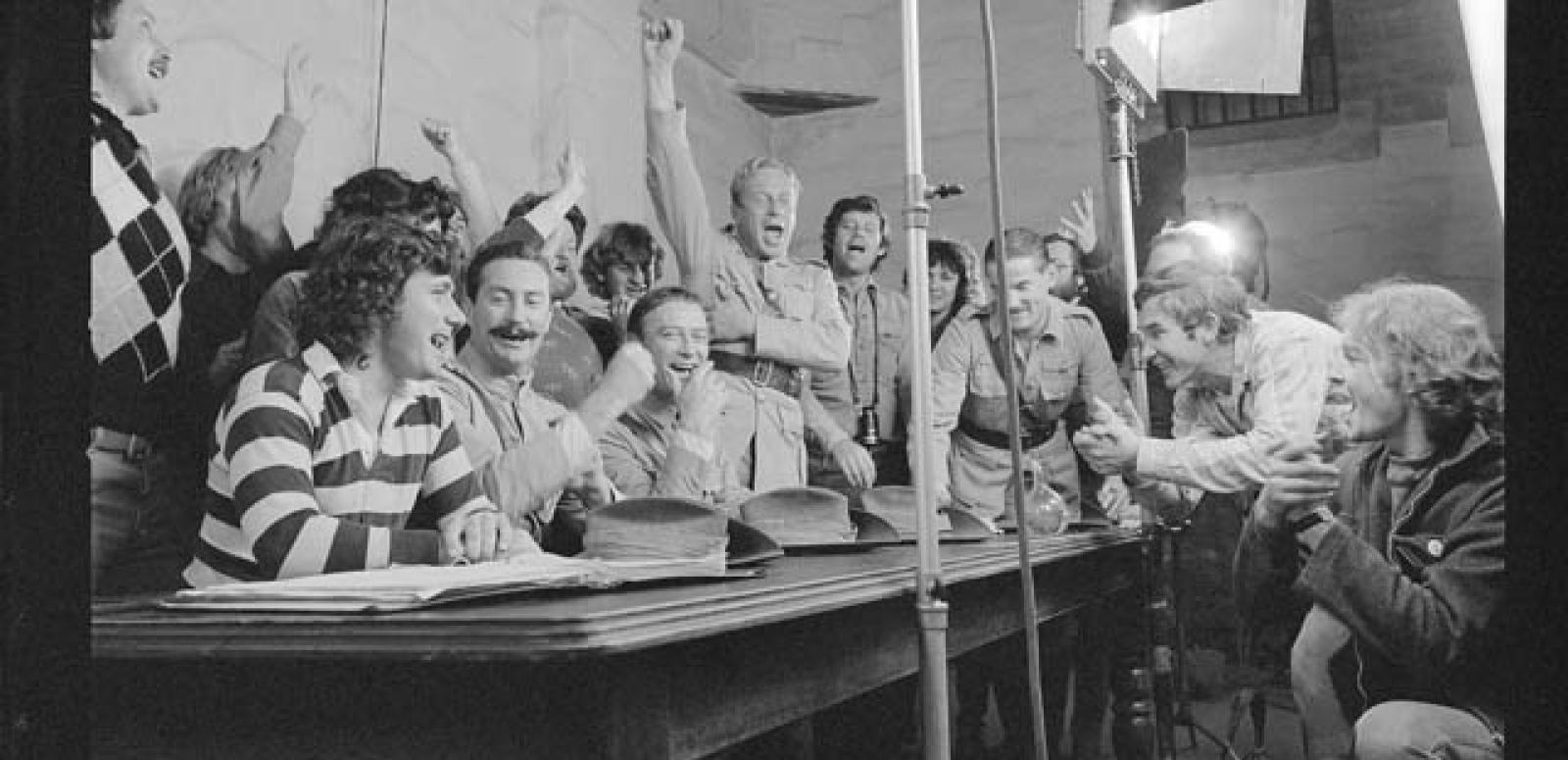
South Australia on film
In celebration of 40 years of independent film production, the South Australian Film Corporation (SAFC) and the NFSA recently collaborated to mark this milestone with an exhibition of production photographs.
One of the most revealing aspects of the SAFC collection is its extensive photographic archives. Though select production stills were used for the promotion and publicity of their feature films at the time of release, many remain unseen beyond the eyes of the original key creative teams who worked on each film. These images capture a ‘behind the scenes’ look into the secret heart of feature filmmaking. The photographer’s own creative eye is embedded in each frame, documenting the fascinating and the mundane aspects of daily life on set.
NFSA curator Itzell Tazzyman and the SAFC curator for this exhibition, Melissa Juhanson, trawled through thousands of photographic proof sheets and coloured transparencies from the photographic archives to uncover the most iconic images from this important collection.

A curatorial decision was made to highlight many of the unsung heroes of filmmaking at work: make-up artists, sound engineers, costume designers, boom mic operators, carpenters, animal wranglers, the humble extras, and all the unseen crucial players who together create the world of movies.
One of the 185 images selected in the exhibition, captures the cast and crew on the set of [legacy-smartlink:Breaker Morant] (Bruce Beresford, 1980), merrily singing happy birthday to actor Edward Woodward between takes. It’s a warm and festive image, showing the conviviality on the film set. This photograph is indicative of the whole exhibition, where the candid eye of the photographer has captured these private moments.
The final selection represents a range of images across many of the SAFC’s most successful productions including Robbery Under Arms (Donald Crombie and Ken Hannam, 1985), Storm Boy (Henri Safran, 1976), Sunday Too Far Away (Ken Hannam, 1975), The Club (Bruce Beresford, 1980), Playing Beatie Bow (Donald Crombie, 1986), Money Movers (Bruce Beresford, 1978) and the 1990s sci- fi TV series Ultraman: Towards the Future, directed by Andrew Prowse.
The task of producing the highest quality digital scan from the original photographic negatives and transparencies fell to our Digital Specialist Brooke Shannon. Brooke is responsible for the NFSA digital still image preservation work, creating hundreds of digital images from the documentation collection every year.
The NFSA approach to digital preservation scanning from still negatives is to capture the physical appearance and condition of the original photo. A number of original photos from the SAFC collection dated back to 1972; they were faded, dirty and had a range of conservation issues due to their age. Although their content was wonderful, the condition of these images made them problematic for reproduction. Urgent restoration required the creation of a file that would be suitable for photographic enlargement and exhibition quality printing.
The real dust busters
When digitally reproducing original archival photographic material, it is not standard NFSA practice to manipulate the colours and density of the original image or to correct scratches or deterioration that may have occurred. Standard archival practice is to scan the item and perform only minor corrections, to ensure that the digital copy represents as faithfully as possible its current appearance. Any intervention archivists might make to the item could inaccurately alter the original photographer’s intent.
One problem encountered with this photographic collection was the decades-old dirt and grime that had built up on the surface of much of the film stock. Though this was not obvious when looking at the images unmagnified, upon enlargement to the exhibiting image size of 30×20 inches, these imperfections were particularly noticeable, and detracted from the importance of what the camera had originally captured.
Photoshop has a dust and scratches filter which is useful when removing small amounts of damage. However when there are extensive problems this software becomes inadequate, as it makes assumptions of what is dust and scratches in the image and reduces them automatically, but it is often wrong. Important details can be accidently removed reducing the overall sharpness of the picture.
In this restoration project, the photographic quality was extremely important for the exhibition. Great care was taken by Brooke and fellow Still Image Services specialist Darren Weinert to meticulously remove all the marks manually from the 189 large scale images restored for the exhibition. This was accomplished by enlarging the image to over 100% on screen, digitally removing the dust and grime by hand, using various tools within Photoshop. This painstaking process ensured that while the original integrity of the image was maintained removal of these conditional imperfections would be undetectable when enlarged and printed, like the following example from Money Movers (Bruce Beresford, 1978):
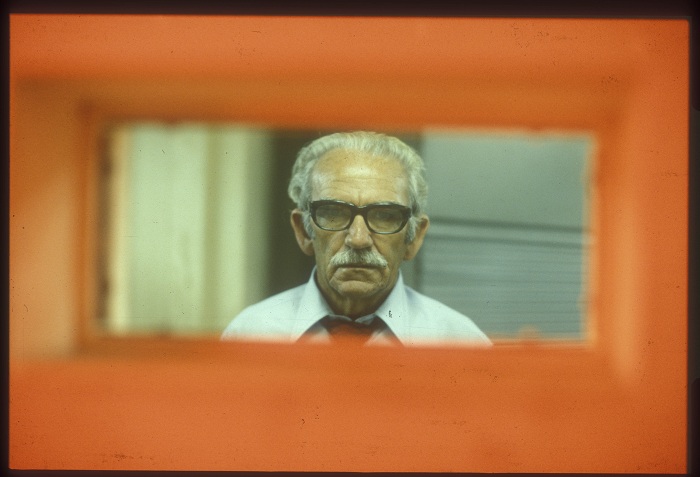
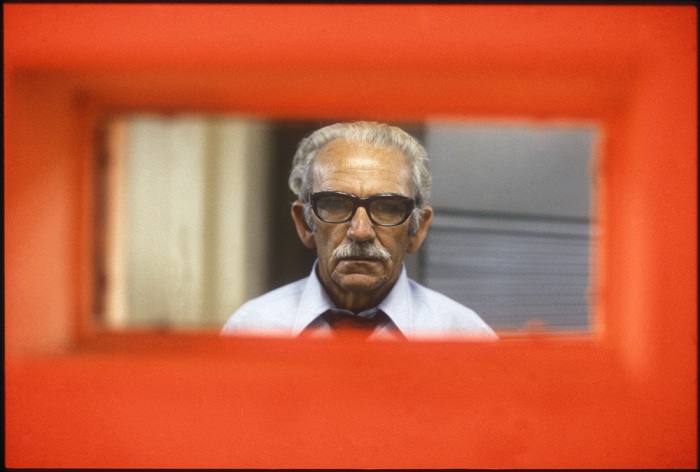
Another problem encountered with the digitisation of the photographic images related to the changes in colour balance and density due to ageing. These problems were created by Tungsten or fluorescent lights, which change the colour balance of film when used under mixed lighting conditions, resulting in many of the colour 35mm slides having a strong green or orange cast. Another possible reason for colour changes is temperature and relative humidity (RH) instability, which causes deterioration over time with image fading and dyes in colour films breaking down, creating a red tone over the entire image.
When reproducing these images for the exhibition, great care was taken to reduce the colour balance problems by bringing the image as close as possible to a neutral colour balance, while still maintaining the overall photographic integrity. This example is also taken from Money Movers, roll 3 frame 11.
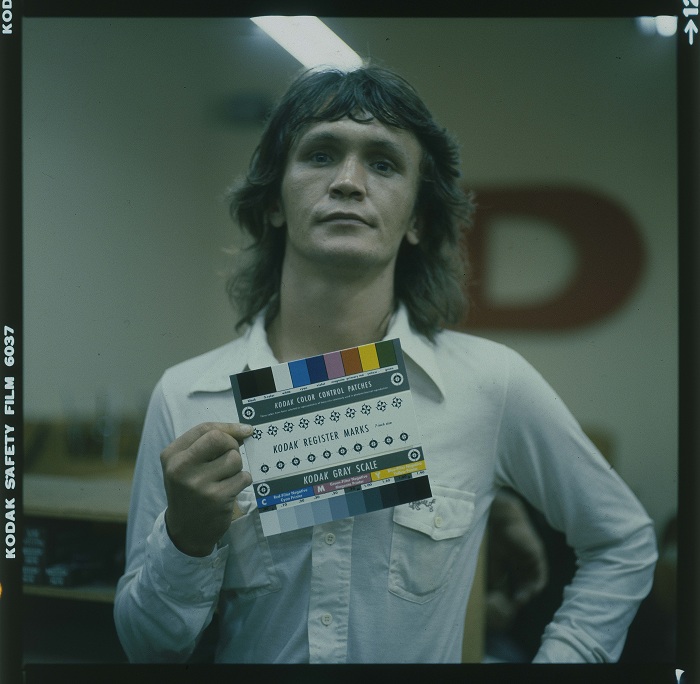
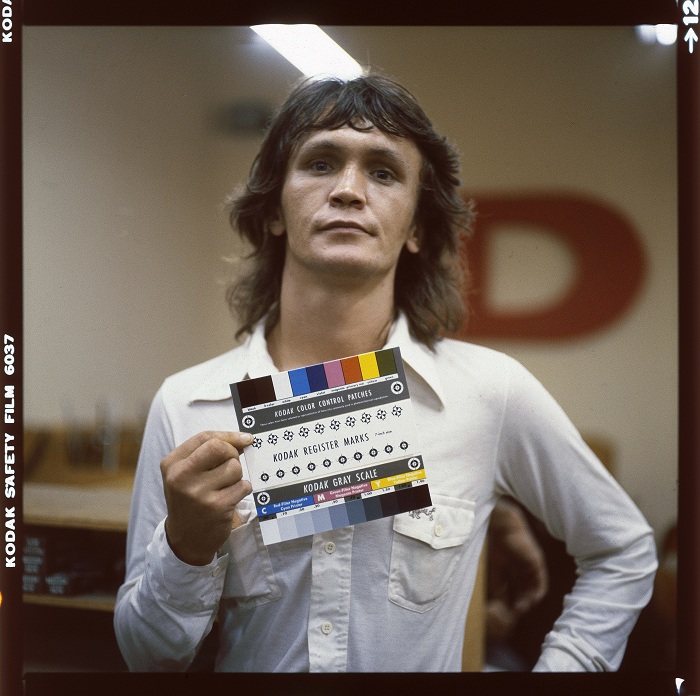
The NFSA team stayed in regular contact with Melissa Juhanson during the digital restoration of the photographs. Several test prints were performed to ensure the highest print quality and what is featured in the anniversary exhibition is the result of this important collaboration. Painstakingly restored and printed from the original photographic negatives kept in the SAFC archives, the complete, uncropped photos can be viewed at this exhibition, many never before seen in public.
We have preserved the very best of the SAFC contribution to Australian film and television, and now have the opportunity to provide a rare and striking insight into this collection to the public.
About the SAFC collection
Moving house seems to trigger the need to get things in order. We sort, cull and pack our possessions in preparation; it’s a daunting task at the best of times. When the SAFC relocated to its new state-of-the-art facilities in Glenside, the task of moving was truly mammoth.
The establishment of the SAFC in 1972 by the Dunstan government helped revitalise an almost dormant Australian film industry. For 40 years, the SAFC has created a culturally significant body of work , producing critically and commercially successful films that brought Australian stories to the world. The organisation helped to propel the careers of well-known talents including Peter Weir, Bruce Beresford, Scott Hicks, Rolf De Heer, Jack Thompson, Sam Neil and Bryan Brown. Though the old Hendon Studios had served the SAFC well, a move to a new facility was needed to fulfil their production slate into the 21st century.
The entirety of the SAFC film archives had to move as part of the relocation, fortunately Melissa Juhanson contacted the NFSA well ahead of the pending deadline. Together we planned to preserve the SAFC’s archives in Canberra.
Initial scouting by our curators to determine the complexity and size of the job confirmed the significance of the collection, vital to preserve and share with all Australians. The SAFC storage room was filled with film and video masters from many of their key productions. The extensive documentation in the archives included thousands of photographic images, over 1400 film scripts, numerous festival and industry awards, original concept artworks, company papers, posters, publicity and rare film memorabilia including a flag used in Bruce Breaker Morant.
NFSA curators Simon Smith, Tara Marynowsky and Itzell Tazzyman spent weeks comparing SAFC film title listings with our existing catalogue holdings, researching the logistics of planning the packing and relocation of thousands of items. Everything was moved in several consignments to the NFSA climate-controlled facilities in Canberra, and the film curatorial team began the task of cataloguing thousands of SAFC items into the NFSA database.
With acquisition and cataloguing now completed, these newly acquired films, videos and documentation, complementing existing holdings, represents one of the NFSA’s most diverse and culturally significant collections, held within the national collection of audiovisual works.
The NFSA would like to thank the South Australian Film Corporation for their support and assistance throughout this project, with special thanks in particular to Melissa Juhanson.
The National Film and Sound Archive of Australia acknowledges Australia’s Aboriginal and Torres Strait Islander peoples as the Traditional Custodians of the land on which we work and live and gives respect to their Elders both past and present.
